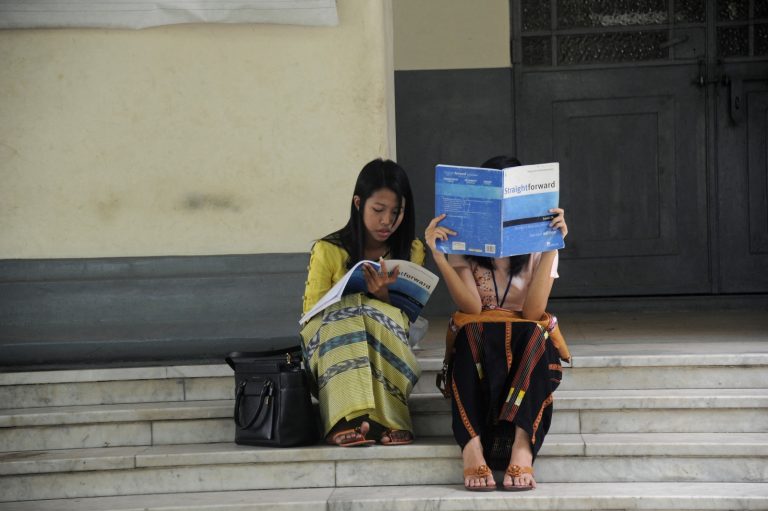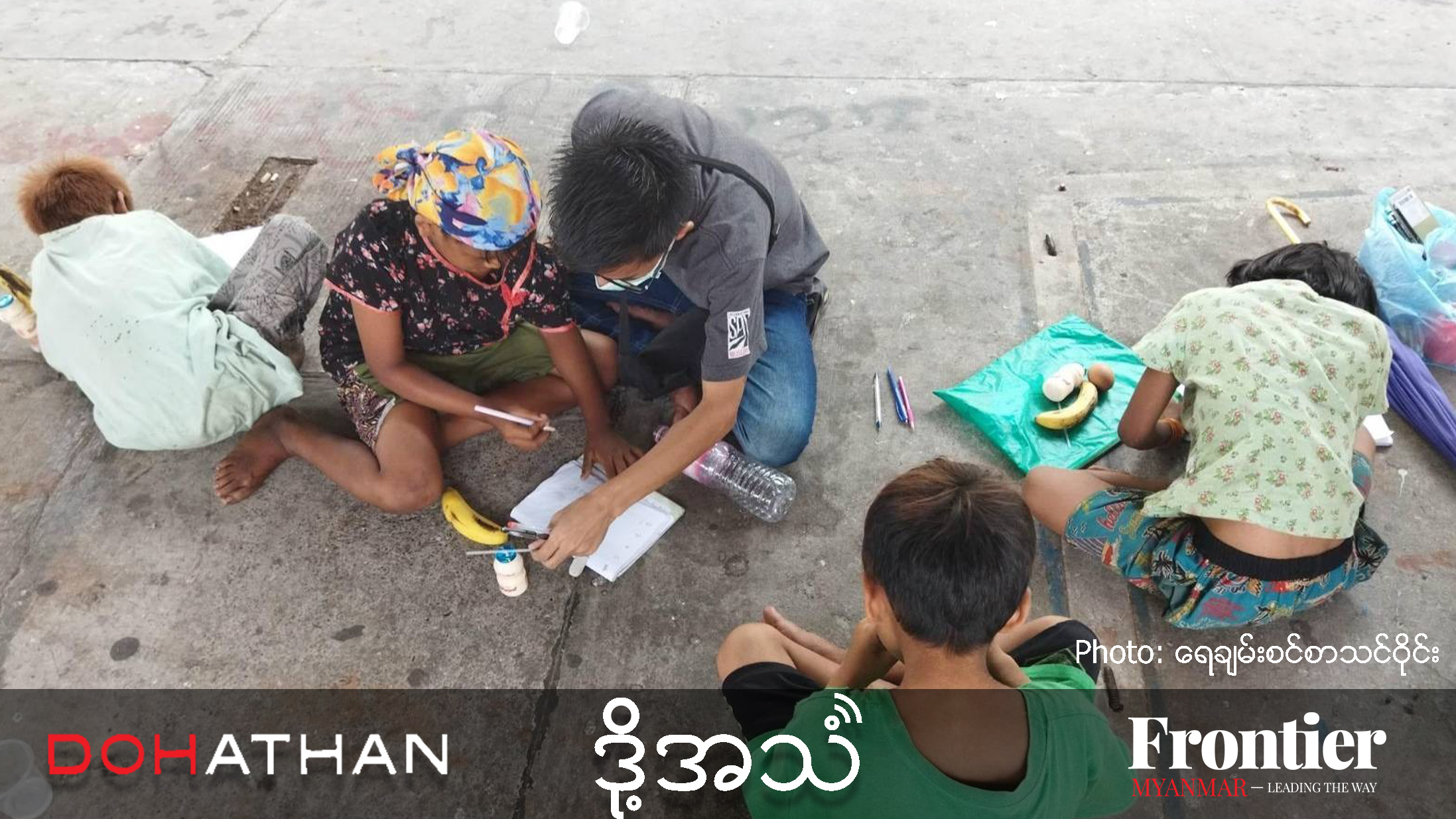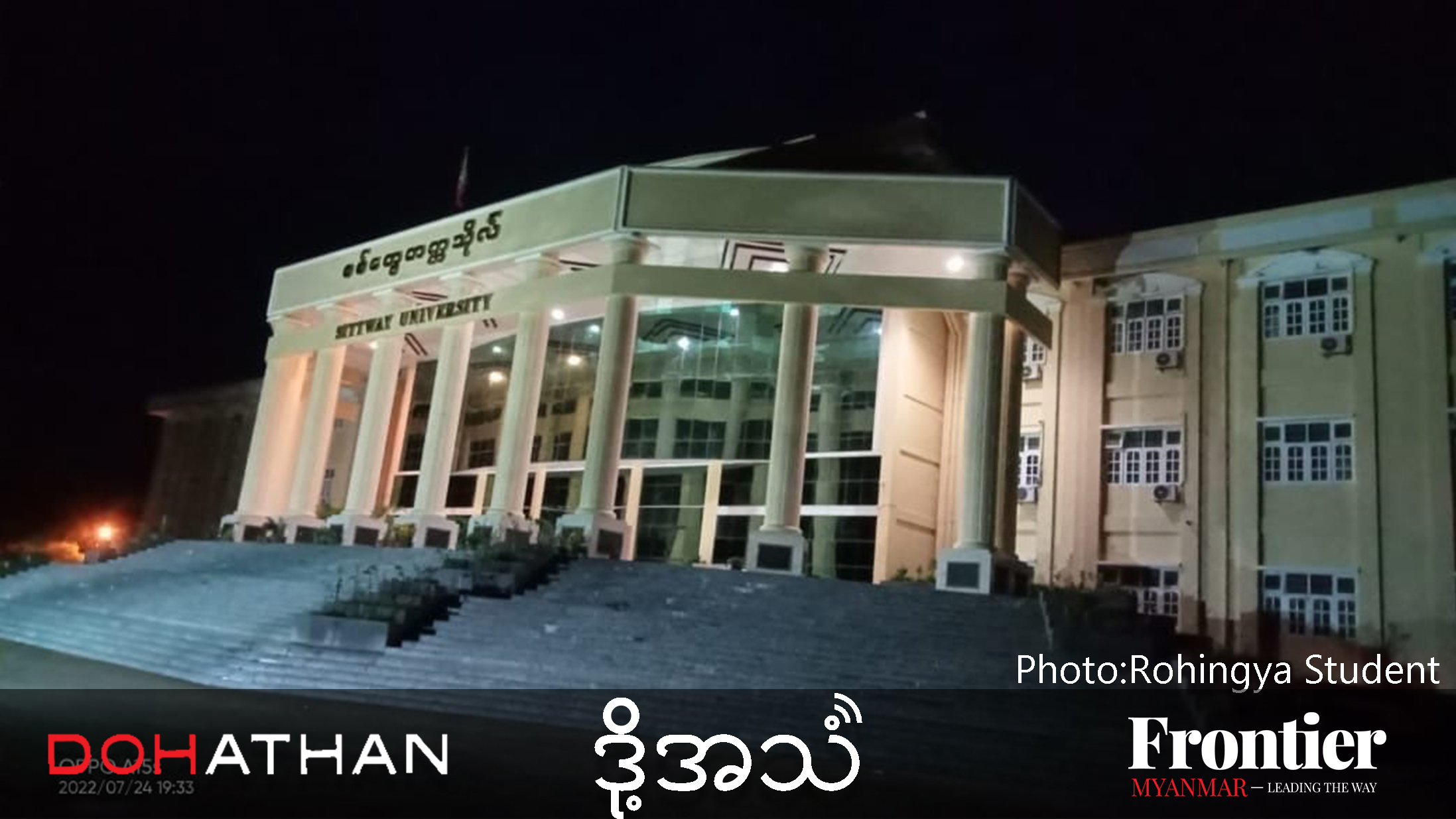Some are advocating for the teaching of a single Chin language, but its adoption would hamper the development of mother-tongue education in a state where many languages are spoken.
By NICOLA EDWARDS and ASHLEY SOUTH | FRONTIER
IN Myanmar’s official list of 135 national races, 53 are Chin subgroups. Considering the Chin people make up about 2 percent of the population, this is a staggering figure. But this categorisation of the Chin people, like the broader list itself, is full of errors.
Some researchers claim there are as many as 77 or 78 distinct “Chin” ethno-linguistic groups, including those based outside Chin State, such as the Asho Chin around Ann in Rakhine State and others in India. In general, ethno-linguistic diversity is greatest in southern Chin State, with language communities in the north being larger and having a more developed literature. Meanwhile, the Zo of northern Chin object to being designated as “Chin”, preferring to promote a distinctive identity.
Some Chin consider this diversity a weakness, undermining efforts to achieve intra-ethnic unity. This is an understandable aspiration for a community fiercely protective of its identity and culture. However, as we argued in the article “In Chin State, cultural memory fades” in the January 9 edition of Frontier, the pluralism of Chin society can also be seen as one of its strengths: that of unity in diversity.
Schoolroom change
The Chin National Front, the state’s main ethnic armed group, is not heavily involved in education. All formal basic education schools are government-run, mostly by the Ministry of Education. There are also some so-called Na Ta La schools that are run jointly by the Ministry of Religious Affairs and Culture and Ministry of Border Affairs, and which require students to study Buddhism as well as other subjects.
Since 2016-17, the education ministry has begun introducing the teaching of ethnic languages in government schools in five states, including Chin. Although implementation has so far been patchy, this is an important development. For the first time since the dark days of military rule, ethnic minority children can openly use their language in government schools.
However, if this initiative is to succeed, proper funding and training for language teachers and teaching assistants is needed, alongside the development of learning materials. In this, civil society actors, mainly literature and culture committees (which in Chin are closely linked to Christian churches), will continue to play important roles. These committees have long provided ethnic language teaching after school hours, during holidays and at Sunday school.
Though still a long way off, the introduction of ethnic language teaching is a step towards a multilingual education system that could deliver important benefits beyond cultural preservation. Research around the world shows that teaching exclusively in a non-mother tongue language in early school years makes learning much harder for children, and can reduce student attendance and achievement. This is especially the case in rural areas of Myanmar, including most of Chin, where families often do not speak Burmese.
Mother tongue-based education of a type feasible in Chin would involve teaching more-or-less exclusively in the mother tongue in the early stages of education, before transitioning to Burmese in later primary and middle school grades. Full mother tongue-based education, practised for all grades, is more relevant where ethnic organisations have their own more-or-less independent school systems, such as the Mon National Schools administered by the New Mon State Party in south-eastern Myanmar. However, this is not the case in Chin.
In the multi-lingual Chin context, children will benefit most by having at least some lessons in their mother tongue. This approach is in line with the government’s Local Curriculum Development initiative, which is contained in the National Education Strategic Plan (2016-21) and the 2014 National Education Law (amended in 2015).
An additional burden
Some Chin nationalists are promoting a single language for the entire community. They present the move as a necessary corrective to historic state policies that, they believe, artificially divided the Chin community into many sub-groups. Progress has been made by amalgamating elements of different Chin languages and choosing words with the greatest prevalence across them. Other Chin leaders have suggested teaching the main Chin languages spoken across the state, usually numbered as five but sometimes seven, at the expense of the languages of smaller, or less powerful, groups.
Promotion of a single Chin language, or a small set of approved (i.e. dominant) languages, should be seen as a political agenda, rather than an education initiative. If primary school children were required to learn a language other than their mother tongue, even if it were a fellow Chin language, it would be an additional burden.
To improve achievement in Chin schools, it is therefore necessary to support the teaching of a large number of local languages and dialects. This would apply whether the mother tongue is a taught subject in primary schools (as under the ministry’s current approach) or used as a language of instruction in support of the mainstream curriculum. It is also not a total departure from past practice. Teachers in government schools where the mother tongue is taught for one session a day have long used a mother tongue as a de facto language of instruction, if they are from the local community.
As already prioritised by Chin parents, it is crucial that children from minority communities learn Burmese, to be able to communicate with citizens from elsewhere in the country (and with members of different Chin groups), and in order to later access jobs and further education. The best way for children from non-Burmese speaking families to learn the country’s official language is through a multi-lingual approach, which builds on the skills, knowledge and understanding they have already developed in their mother tongue.
Multi-lingual education also supports communities’ pride in, and maintenance of, ethnic cultures and identities. In this way, it can contribute towards peace-building by supporting a sense of inclusion among ethnic communities who have been historically marginalised within, and sometimes alienated from, the state.
Ethnic groups in Myanmar have a justifiable fear of losing their language, traditions and cultures, and with them, their identity. Unless efforts are made now to record traditions and cultures, and unless local languages are taught and developed, this rich heritage will likely be lost. This would be immeasurably sad not only for Chin communities, but also for Myanmar.







